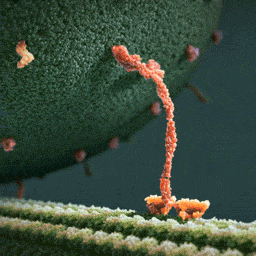Notes/observations/coursework as I head toward a Design Thinking degree
Don't wanna be here? Send us removal request.
Text
Too many ways to skin a cat
Our project is to make virtual design thinking better. When not in a physical environment, the most practical question In the process of doing DT virtually almost always becomes “how do we want to keep this?”
Once an idea has 3-4 different facets it quickly becomes difficult to organize and keep track of it. You can color code and map it into a grid, matrix, chart, what have you, BUT once it comes time do do anything else with said ideas it would really be nice to have each of those facets more like a spreadsheet/table/database form.
Virtually, you can do that but there’s still not an easy way to go back/forth without a lot of copy/paste. Should I start out as a spreadsheet and then visualize (slower at first)? Or should I just throw everything up there and color code and move around until it makes sense and then move to something more rigid (slower later)? Right now there’s no good answer. Hopefully IBM will run with our project and the world will have something better in the near future. My team is awesome and what we’ve come up with is, too.
1 note
·
View note
Text
The Cultural Web
A few years ago I read JR Woodward’s Creating A Missional Culture and in the conversations with my group the topic of WHY is IBM working so hard on changing the culture to embrace Design Thinking brought me full-circle in this area. Culture can in many ways be directed by its leadership.
In Chapter 2, Woodward describes a group of interrelated elements which create culture and make up the “cultural web.” While this book is written with an ecclesiological intent; I have tweaked some of what JR says to apply more generally to an organization.
language
the words we use & choose have a profound impact on our perspective. “It is through language we have a narrative to inhabit.”
artifacts (cultural goods)
the items we use, the books we draw from.
narratives
“The dominant story of a culture”
includes how we look at situations and content, our stories, and our doctrines
helps the community answer “what is our calling?”
rituals
“Procedures or routines that are fused with meaning”
Answer the question “What are our core practices?”
There are “thin practices” = those to a certain end but don’t touch our identity (like brushing our teeth or exercising)
AND there are “thick practices” = those that do touch our identity & have greater meaning
institutions
Answer the question “How will we fulfill our calling together”
Closely related: Structures, symbols, systems
Woodward includes a plethora of questions here
ethics
“moral convictions that inform how the community lives”
not limited to outward compliance
= Being + Doing + Reflecting (in a cyclical nature)
Answers “What does it mean to be faithful & fruitful in our mission?”
0 notes
Photo


Your body is an incredibly bizarre machine.
“What you see is a myosin protein dragging an endorphin along a filament to the inner part of the brain’s parietal cortex which creates happiness. Happiness. You’re looking at happiness.”
572K notes
·
View notes
Text
Hard Work
My team is awesome. Love meeting and talking with them. And now that we’ve established some norms/standards in our last meeting, the conversation/info is flowing a little free-er.
But when I get to my own part, design thinking is definitely hard work, especially the parts that are on my own... Mostly hard to get started because there are so many other things I’m also interested in, and productive uses of my time. Part of how I know I’m an extrovert at heart, and part of the challenge in asynchronous collaboration.
0 notes
Link
Many design thinking tools/templates and other visual tools downloadable here!
0 notes
Link
Just started watching this series; concept of abstraction ties in perfectly with design thinking. In the first episode, I love how the artist uses #Legos (the classic ones) to boil down concepts/objects/places to their essential nature.
Also started watching The Little Prince with my daughter and it reminded me how well the original book also boils down the complexities of adult life into simple, seemingly obvious truths, that are obscured by our own experience/conditioning/lack of playfulness.
0 notes
Text
Meeting my “Team B” Teammates
It’s been exciting and invigorating to meet my teammates for the remainder of the semester. I think we’re all excited about working together and it was great to meet each other. I love meeting new people, and I’ve had one-on-one intros assigned before in other contexts, but this was the first time for an academic assignment.
I think this is going to go a long way in creating a united group and building trust, which is a key early factor in successful Visual Teams (Amazon link - this is one of our textbooks this semester. Highly recommended.) All four of us seem to be agreed that we have the makings of a strong team for this project. Our first group meeting (virtual of course) is tomorrow, and we have a packed agenda.
0 notes
Text
IBM Design Thinking Field Guide
Our program tends to follow the Luma Institute’s flavor of design thinking. I had already looked at IBM Design Thinking in a previous class and appreciated their flavor as well, especially the “loop”.
Upon looking over the IBM Design Thinking Field Guide (free to download), there are some great additional concepts/angles, and it’s interesting to see their strategies in comparison to the ones we’ve gone over. There’s a lot of overlap with Luma’s Innovating for People Handbook ($34.95 on Amazon), but also quite a few useful ones that are new to me.
As I finish going through the guide, I’m outlining these additional strategies in my journal to add them to my arsenal.
0 notes
Text
Interview/Mind Map and A Real-Life Application of Design Thinking
I interviewed an assigned classmate over Skype and drew a mindmap of what I found out about her to introduce my partner to the rest of the class. This was a fun/great way to get to know the whole class and to get to know my classmate. We have the same personality type (see previous post). I liked this method a lot better than introducing myself on my own, although if we had to do this in every class it might be a bit much. I got to know my classmates more in-depth, as well as see everyone’s particular style of presenting and interpreting.
I am a little behind on my reading but will catch up soon. Getting back into class after taking a semester off is exciting but also a bit challenging. As far as my health/energy levels go, I feel much more like my old self than I did last semester. The topic of this semester and the partnership with IBM is especially exciting to me.
At work we’ve been planning to move into a much smaller space within the next year or two. This is a big challenge but some of my training in design thinking has already paid off here. I had already started an Affinity Cluster diagram a while back; this, along with my DSN-640 final project research, was extremely informative in creating a preliminary interior design layout for the space. Planning to move a copy/print shop (essentially a factory) is no small task, but with several important knowledge pieces in place, and with the task being a bit sudden, the results look much more promising and functional than they would have.
0 notes
Text
Back in Action / Direction for this Semester
(This is a long one)
After a break in the fall semester, I’m back and taking DSN 645: Collaboration Studio. Part of the class is to keep an ongoing journal of reflections on the process, so I’m going to try using this tumblr for that purpose along with any other postings I decide to add. We’ll see how it goes; I may decide that some entries are more appropriate to do instead in this awesome book that I made for the class:

It’s wire bound 9x12 with chipboard cover and a few yellow/kraft paper 9x12 envelopes glued on the inside covers and one as a divider. The paper is some kind of leftover #80 text with a rough/vellum type finish that I found with a bunch of scrap paper. It’s awesome paper but there’s no telling what it actually is, so I’m glad to be able to use some of it after having it sit there for probably 15+ years. I don’t look forward to having to scan all of the pages at the end of the semester though!
Personality Type
I’ve been fascinated by personality types for a while, and thought I’d settled into being ESTP after taking several tests verifying this a couple of years ago. For this class I re-took the test, and lo and behold, I am ENFP-A, “The Campaigner” according to 16personalities. (Click for my personality results).
The short version of my individual traits: Extraverted – 65%, Intuitive – 76%, Feeling – 61%, Prospecting – 86%, Assertive – 77%.
This was a surprise but as I dig in this sounds much more like me than “The Entrepreneur.” I wonder how much my personality has actually shifted, how much is me overthinking the answers, and how much of it is all this “silly” empathy we’ve been learning!
0 notes
Link
0 notes
Link
1 note
·
View note
Video
youtube
Tim Brown (ideo) talks about the shift from design to design thinking.
0 notes
Link
0 notes
Photo

Graphic Design: A to Z. Everything that design is about and everything you need to consider before you hit another stroke. It is these elements that ultimately work together as a whole to produce a design that can be called successful. The rest is left to the skill and creativity of designers. The ABC of Design: http://www.designmantic.com/blog/infographics/abc-of-design/
31 notes
·
View notes
Video
vimeo
IxDA Student Challenge Miskiv-Mayer
0 notes